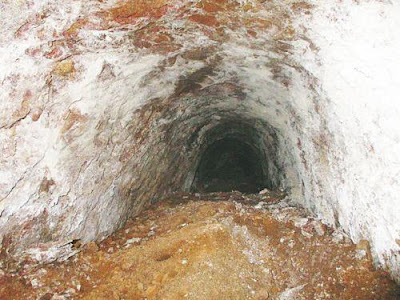Filenews 13 May 2021 - by Ioanna Mantziepa
A very interesting underground burrow dating back to the Roman period and estimated to be part of a larger aqueduct that transported water to the ancient city of Amathus, was spotted by SALA workers during excavation work in April in the area of Chapelia.
The burrow is heading southwest towards Amathus, its peak was found at a depth of two meters from the surface, and is one and a half meters high and 50 centimetres wide.
Speaking to "F", the officer of the Department of Antiquities in Limassol, Giannis Violaris, expressed the view that the ancient aqueduct starts further north, towards the area of Lystovounou, where until today there are water sources. "In antiquity," he explained, "aqueducts followed the terrain, transferring water from the source to the city and depending on geomorphology, some parts of the aqueducts were underground, as in our case, other surface and other aerial, i.e. on the archery, as in the case of the Larnaca aqueduct, which goes back to the Turkish occupation, is much later".
At the same time, he mentioned that the French archaeological mission Amathus brought to light with its excavations, in the area between the motorway and the citadel of Amathus, the bases of the arch of the Roman aqueduct of the city. During the surface investigations of the French mission, among many other elements that are still unpublished, an inscription was found on a clay pipe indicating that the very construction or possibly some reconstruction of the aqueduct dates back to the time of the Roman Emperor Hadrian in the 2nd century AD.
Mr. Violaris stressed that during this period there had been several major public works in Amathus and elsewhere. With its abandonment, unknown when, this underground part of the aqueduct of Amathus was slowly filled with sludge, i.e. mud (in Cyprus we call it "mummies") that was transferred from the water that flowed into the burrow in various flood episodes over the centuries.
* The photo from the SALA.
